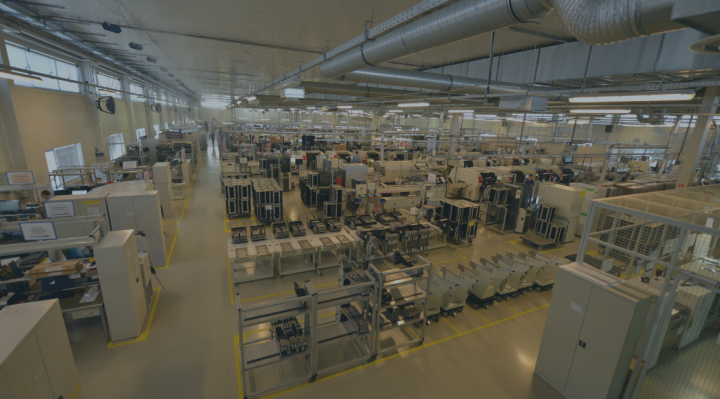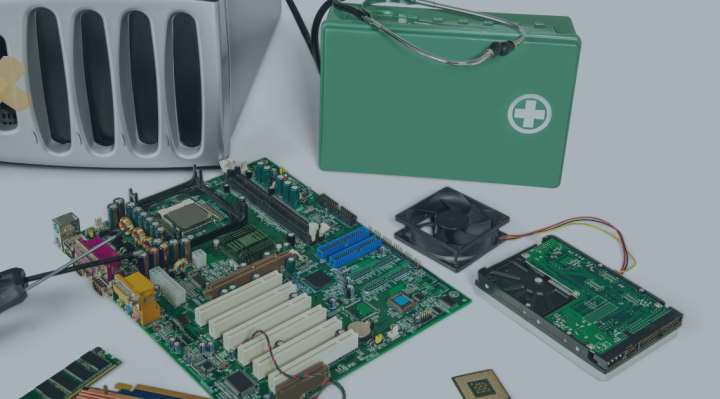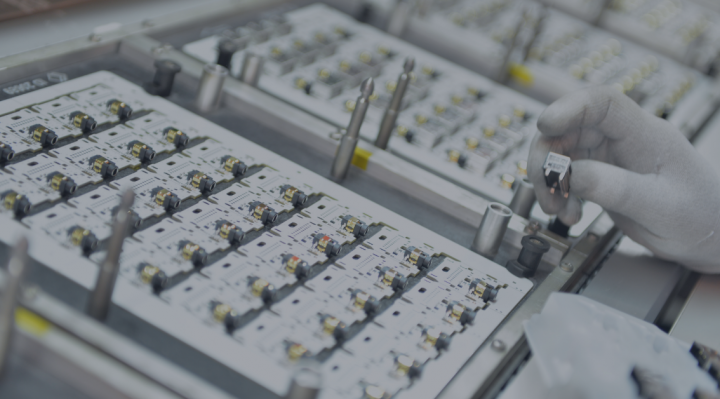The basis for building an effective business relationship is the proper preparation of both sides for making right decisions. In case of an OEM it entails the necessity to get familiar with a process of establishing cooperation from the perspective of an EMS contract provider.
Cooperation between an OEM and a contract EMS provider
Cooperation with an EMS provider can be a very positive experience and solve many OEM’s problems. Good communication, community of shared objectives of both companies as well as similar level of technical advancement form its basis. Therefore, it is beneficial to pay a visit in the EMS’s facilities in order to get to know its technical and organisational capabilities, and to verify, as well, if both companies suit each from the business perspective.
The aforementioned factors should be taken into consideration by the OEM, especially since delegating a part or whole production to the selected EMS provider will always be a considerable challenge and the cooperation should provide benefits for both sides.
At Assel we always try to lay strong foundations for a long-term relationship with the OEM at the beginning of our cooperation. That’s why we focus on creating a stable production environment and a supply chain, building relationship, and minimising potential risk.
It is for these reasons that in the early stage:
A three-person team composed of Key Account Manager, Project Manager and Process Engineer is responsible for the management of an OEM’s account, pricing of new projects and management of projects already at the production stage. They organise regular meetings with the customer, prepare reports and make sure that the basic objectives of the cooperation are achieved, and all critical problems that appear in the process of implementing a new product are solved. Moreover, they take care of providing the customer with all necessary information.
At the stage of initiating the cooperation with the customer a Quality and Supply Chain Management Team is also of key importance because they together create a methodology for ordering products.
The aims of the aforementioned activities are: precise understanding of the OEM’s needs, creating solutions adjusted to its requirements as well as requirements of the supply chain and its customers. They also should enable increasing an OTD (On-Time-Delivery) indicator, maintaining of high quality and ensuring OEM’s customers’ satisfaction with the use of the lowest possible costs and the minimum level of OEM’s financial responsibility for material.
Supply chain
To begin the cooperation we need such data as manufacturer’s BOM, schemes for all projects, Gerber files of PCBs, assembly schemes and specifications of tests. This documentation allows us to prepare BOM for a project in our ERP system, build a business model, and create the supply chain.
Our goals are to guarantee uninterrupted flow of material deliveries and reach the lowest possible material engagement enabling our customers to lower their financial responsibility. Therefore, we focus on communicating with suppliers and conducting audits in their facilities.
For these reasons, it is reasonable in the long run to delegate supply chain management to the EMS provider. Not only does it give an opportunity to ensure timely deliveries of high quality materials, but also it enables the OEM to avoid general costs resulting from deliveries, their servicing and, most importantly, their financing. In fact, the time saved in this way can be devoted to designing, taking marketing activities and selling products, especially since the OEM does not lose control over the supply chain because we discuss and clarify with it all questions and problems that appear.
Inspection of materials
One of the tasks which we take over from OEMs is the cooperation with suppliers and the inspection of delivered materials. It enables us to provide the highest quality of processes and products. Although our suppliers have already been thoroughly verified, we still check every delivery with the use of an AQL sampling method. In case of any inconsistencies, we send the supplier an NCR report and require an 8D report being prepared, and expect the material to be changed for the one compliant with the order.
The quality of materials, timeliness of deliveries as well as corrections implemented on the basis of the 8D reports constitute the basis for the assessment of a supplier.
During the delivery of materials our Quality and Supply Chain Management Team verifies each offer in terms of its compliance with external standards and procedures. In general, the inspection of materials can be divided into two categories:
Inspection of electrical components. With regards to these components we try to determine if the delivered material is exactly what it should be, so the proper element in the right amount. We control, as well, MPN (Manufacturer Part Number), labels, codes of dates and outer packaging.
Inspection of electromechanical components, which, in fact, also involves verification of the delivered amount, documentation and outer packaging. However, in case of custom-made components, such as PCBs or details made of metal and synthetic materials we verify, as well, their compliance with schemes, data defining their finishing and materials, and tolerances and measurements given on the schemes. If the OEM does not possess such information, we are ready to help with its preparation.
NPI
If we possess materials that have already been approved and complete documentation, we can prepare ourselves to an NPI (new production introduction) process. Within this process we supervise, control and possibly modify all stages regarding the assembly, tests and logistics of deliveries of a ready product.
It is a very complex process whose every step requires supervision, attention and control. NPI is also one of the most important elements of every outsourcing process because it allows the EMS providers to ensure that it will be able to consistently and timely deliver products of high quality.
The NPI process has a few phases:
A pre-NPI phase is a stage within which we prepare procedures and the process itself, conduct P-FMEA (Process Failure Mode and Effects Analysis), create a process control plan, configure SMT machines as well as we programme the system of automated optical inspection (AOI). Every of these activities facilitates the introduction of an optimal NPI process.
NPI phase - new product introduction phase which involves:
- Production of the first small batch of a product under the control of NPI engineers.
- Testing of products with the use of all required methods and equipment including an AOI system, multimeters, an X-ray control, RLC and functional tests, and other methods required by the customer.
- Correction of the production process which allows our engineers to propose the best method of manufacturing which can result in the significant reduction of costs.
- Permission for full production under the condition of all tests results being positive and full production approved.
- Preparation of an NPI report presenting the physical production process of a product including all faults detected during the assembly and DfM’s (Design for Manufacture) opinion.
- Presentation of suggestions regarding the things that should be improved or redesigned.
Post-NPI phase
The knowledge acquired during the implementation of the production process enables us to optimise it. This knowledge comprises the verification of the necessity for implementing changes in the design of a product, optimisation of machines’ and processes’ configuration, and supply chain optimisation (involving searching for some new suppliers). The optimisation of the supply chain can bring some more benefits to our customers that result from achieving better prices and shorter delivery times.
The NPI process is implemented in order to verify and prove that the supply chain and other existing production processes will enable us to manufacture high quality products on time and according to their specification.
Final remarks
The most important for a contract EMS provider is understanding the specificity of the customer’s project. Thanks to this the contractor is able to meet customer’s needs and build a good business relationship. The key element to understanding is effective communication between the customer and the contract manufacturer.
Initial discussions in the cooperation include mainly talks between the commercial and engineering units with the customer, clarification of all aspects of the project, establishing possible changes and a visit in the factory. All these activities enable us to reduce the costs of the project, eliminate possible threats and get to know better with our customer.
Intensive work at the initial stage of the cooperation results in uninterrupted production and a low complaint rate.






